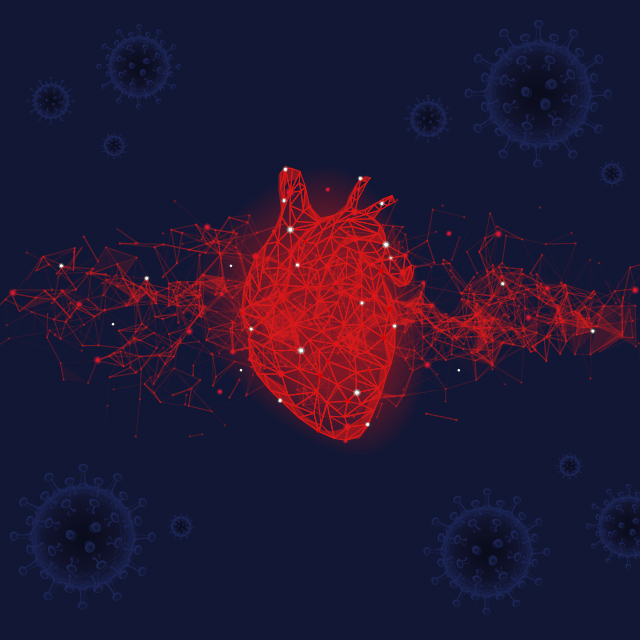A team of Johns Hopkins researchers found that modeling the heart in 3D using combined imaging techniques can help predict heart rhythm abnormalities, called arrhythmias, in patients with genetic heart disease. This approach could one day help clinicians determine which patients with a condition called hypertrophic cardiomyopathy might benefit from the implantation of a defibrillator. The team’s study appears in eLife.
Hypertrophic cardiomyopathy causes thickening and scarring in the heart muscles. Some people may not have clear symptoms of the condition, but others may develop heart rhythm abnormalities that can lead to sudden death.
“There are ways to predict which patients are at risk of developing heart arrhythmias and who might benefit from a defibrillator, but these methods are not accurate,” explains study first author Ryan O’Hara, a doctoral candidate in the laboratory of Natalia Trayanova, the Murray B Sachs Professor of Biomedical Engineering and Medicine. “We wanted to develop a more accurate and personalized approach for predicting abnormal heart rhythms in patients with hypertrophic cardiomyopathy.”
To do this, O’Hara and his colleagues combined two techniques: contrast-enhanced cardiac magnetic resonance imaging with late gadolinium enhancement and post-contrast T1 mapping. Together, these methods enabled the team to construct digital, personalized replicas of patients’ hearts, including specific scarring and thickening characteristics, and to evaluate the likelihood that they would go on to develop heart arrhythmias.
Testing this approach in 26 patients showed that it accurately predicted which patients would develop abnormal heart rhythms approximately 80% of the time.
“This is a substantial improvement over currently used prediction techniques, which are only accurate about half of the time,” O’Hara says.
Before the technique can be adopted more widely, more studies are needed to confirm if this personalized modeling approach can be used to guide patient care.
“If our technology is shown by larger studies to be superior to existing prediction methods, then it could help ensure that patients at high risk of heart arrhythmia receive a defibrillator or other appropriate intervention,” concludes senior author Trayanova. “Likewise, it could also ensure that patients who are unlikely to benefit are spared the risks of implantation.”
Read the full story: New heart modeling method may help doctors pump the brakes on sudden cardiac death


